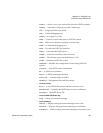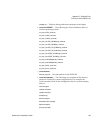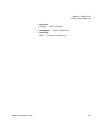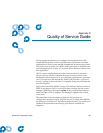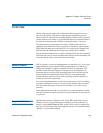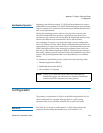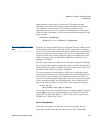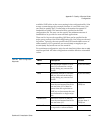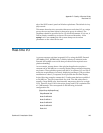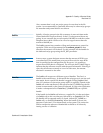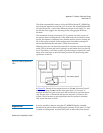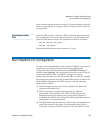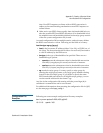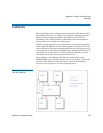
Appendix D Quality of Service Guide
Configuration
StorNext 3.5 Installation Guide 147
RTIO Upper Bound 4
The limit will be specified in terms of I/Os per second (parameter Rtios)
or in terms of MB/sec (parameter
Rtmb). Case is not sensitive. Note that
I/Os per second are I/Os of any size to the disk subsystem. Either or both
may be specified. If both are specified, the lower limit is used to throttle
I/O. If neither is specified, no real-time I/O is available on the stripe
group. These parameters are applied to a stripe group definition.
[StripeGroup MyStripeGroup]
Rtios 2048
Rtmb 10
The above example specifies that the storage system can support a
maximum of 2048 I/Os per second at any instant, aggregate among all
the clients, or 10 MB/sec, whichever is lower.
Most real-time I/O requests will be a stripe line at a time to maximize
performance. Non-real-time I/Os will be a minimum of a file system
block size.
Reserve 4
To prevent deadlock, the QOS implementation never allows zero I/O/
sec for non-real-time I/O. Otherwise, a system could block with many
critical file system resources held waiting for I/O to become available.
This is especially true via flush-on-close I/O via the buffer cache. It
becomes extremely difficult to diagnose system hangs because no I/O is
Note: It is important to realize that the rtios and rtmb settings refer to
the total amount of sustained bandwidth available on the disk
subsystem. Any I/O, either real-time or non-real-time, will
ultimately be deducted from this overall limit. The
calculations of available real-time and non-real-time are
discussed later.
Specifying rtmb in the FSM configuration file is only
recommended if all I/Os are well formed (that is, a full stripe
width). Otherwise, the conversion between MB/sec and I/Os/
sec using the well-formed I/O calculation could lead to
unexpected results.



